- India
- International
World Heritage Day: Rediscover Champaner, the city where Baiju Bawara found his voice
On World Heritage Day, April 18, a look at a 15th century 'smart city' through the Champaner-Pavagadh Archeological Park, which boasts of some of India's most stunning temples, mosques and visionary water installations.
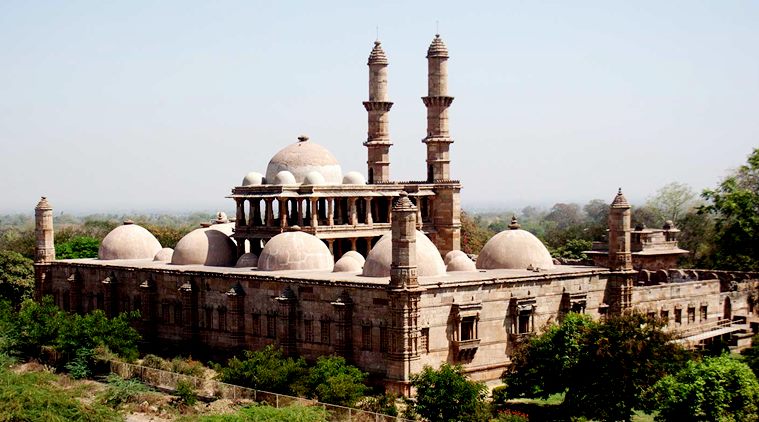 We make such a lot of noise about the Taj Mahal. But the Taj Mahal is just one line here, Champaner is 2000 years of history. (In pic) Elevated view of Jami Masjid from the eastern wall of Champaner’s fortifications. (Source: Sahapedia.org)
We make such a lot of noise about the Taj Mahal. But the Taj Mahal is just one line here, Champaner is 2000 years of history. (In pic) Elevated view of Jami Masjid from the eastern wall of Champaner’s fortifications. (Source: Sahapedia.org)
What do you say to someone when they tell you that the Taj Mahal is nothing but a line in your history textbook? And that we should be looking elsewhere if we want a real sense of art, architecture and history? According to architect Karan Grover the Taj, the Lal Qila and all other such monuments pale in front of the Champaner-Pavagadh Archeological Park in Gujarat.
“We make such a lot of noise about the Taj Mahal. But the Taj Mahal is just one line here, this [Champaner] is 2,000 years of history. All the sites that we think are so great are just one-one lines here. A 100 years before the Taj and a 100 years after the Taj, there is nothing,” says Grover. Champaner this is the only site which spans 2,000 years.
Located in the Panchmahal district of Gujarat, some 50km away from Baroda, Champaner-Pavagadh was inscribed as the World Heritage Site in 2004. Spread across 2,911.74 hectares, this is a hidden treasure trove of wonders, not yet fully excavated, the scale of which rivals the lost city of Pompeii. An amalgamation of 114 monuments of varied religions, the archaeological park comprises Hindu and Jain temples and several mosques, along with citadels, a palace, military structures and stunning water installations. Most of the temples date back to 14-15th centuries, with the oldest from 10th century – the Shaivite Lakulisa temple – representing the many cultures that have now disappeared.
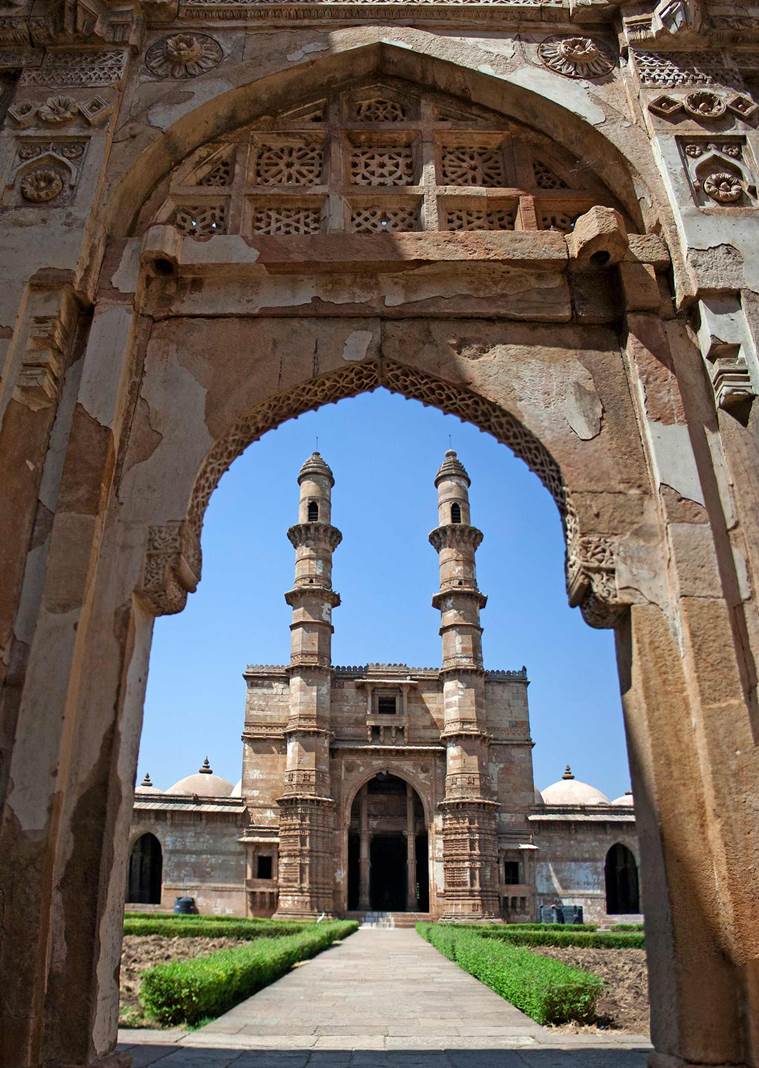 View of the central minarets of the Jami Masjid from its entrance. (Source: Sahapedia.org)
View of the central minarets of the Jami Masjid from its entrance. (Source: Sahapedia.org)
Champaner – A Forgotten City
Champaner, during its glory days, would be now what is called a ‘smart city’, given that its architecture, agriculture and water installations were way ahead of its time. It’s, therefore, sad that this city remains largely absent from public memory. It doesn’t find mention in much of popular culture. While it is a popular religious site of worship for the Hindus, it is mostly limited to Gujarat. But the Champaner-Pavagadh Archaeological Park has much to offer and not just to the religiously inclined.
For the archaeologically curious, the Pavagadh hill is made of reddish-yellow coloured stones, one of the oldest rock formations found in the country, which according to historian Hanoz HR Patel might just be where the city found its name. The “pigmentation of the igneous rocks of the Pavagadh Hill are often compared to the ‘champaka’ flower or that resemble the flames of fire from which are derived the name Champaner for the town and Pavagadh for the hill,” he writes in a reserach article.

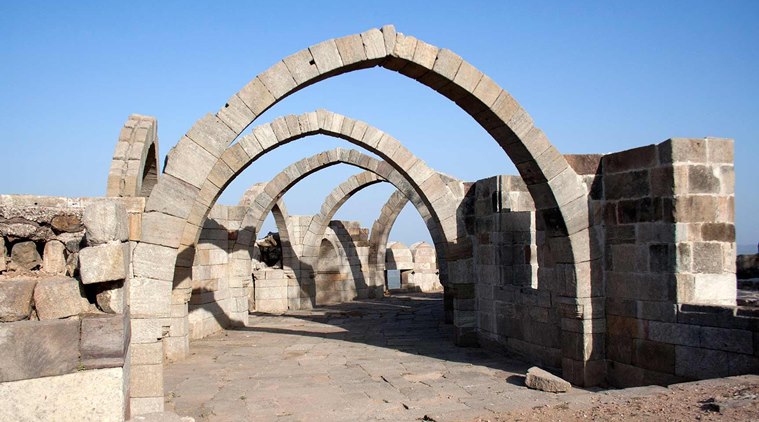 Midway up the Pavagadh Hill is an unfinished pavilion with seven arches called Saat Kaman. (Source: Sahapedia.org)
Midway up the Pavagadh Hill is an unfinished pavilion with seven arches called Saat Kaman. (Source: Sahapedia.org)
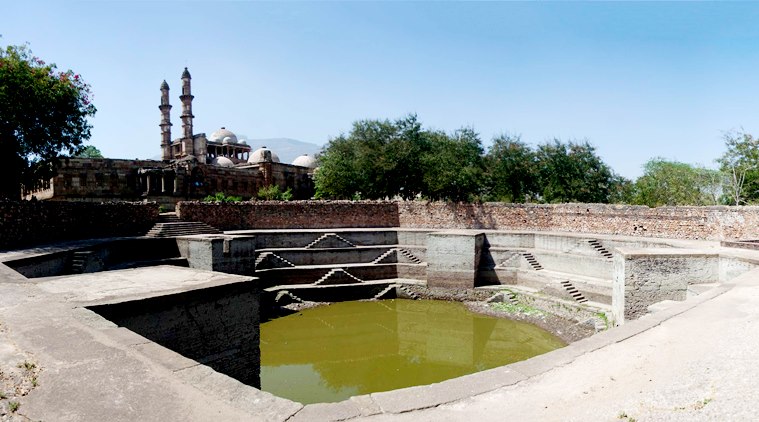 An octagonal step well in the north-east side of the Jami Masjid. (Source: Sahapedia.org)
An octagonal step well in the north-east side of the Jami Masjid. (Source: Sahapedia.org)
For those interested in architectural designs, the five mosques that have survived modernisation and years of neglect bear testimony to the rich and diverse cultural influences that touched the city. The Jami Masjid, the biggest mosque found on the site not only influenced the mosques that would be constructed in the future, it also is a unique and beautiful amalgamation of Hindu and Muslim design styles.
The most interesting feature of the city, however, is its water installation system, something that puts it ahead of other historical cities of its time. Champaner, which is also known as the ‘city of thousand wells’, was known for its water shortage. To mitigate this, several water-harvesting techniques were employed at the site. As Patel writes, “There are several natural talaos (ponds) such as Medi Talao in Atak area, Tailia Talao at Machi, and Dudhia, Chasia and Naulakhi talaos at the Mauliya Plateau. There are three kunds on Pavagadh Hill named after the famous rivers of India – Ganga, Yamuna and Saraswati. The stepwells were created to cater to day-to-day needs.” The helical stepwell, the most prominent of them all, was built in the 16th century, and its structure nothing short of an architectural marvel. “The water structures symbolised religious, social and political development and were considered an important aspect of architecture during those times,” he says.
The City with Many Names
The city of Champaner was founded during the time of the Rajput king Vanraj Chavda of the Chavda dynasty in the 8th century. It is perhaps the last surviving city that has Islamic architecture that predates the Mughal era. The city has been shaped and reshaped by the various kings who ruled it. After the Chavda dynasty came the Khichi Chauhan Rajputs, famously related to Prithviraj Chauhan. Then came the turn of the most well-known ruler of Champaner, Mahmud Begada, who not only renamed the city to Muhammadabad after himself but also made it the capital of his kingdom. He then lost Champaner to the Mughal emperor Humayun in 1535, and then began the era of neglect for Champaner. After losing to Humayun, Begada moved back his capital to present day Ahmedabad and Champaner stayed in a state of neglect and ruin for the next 300 years.
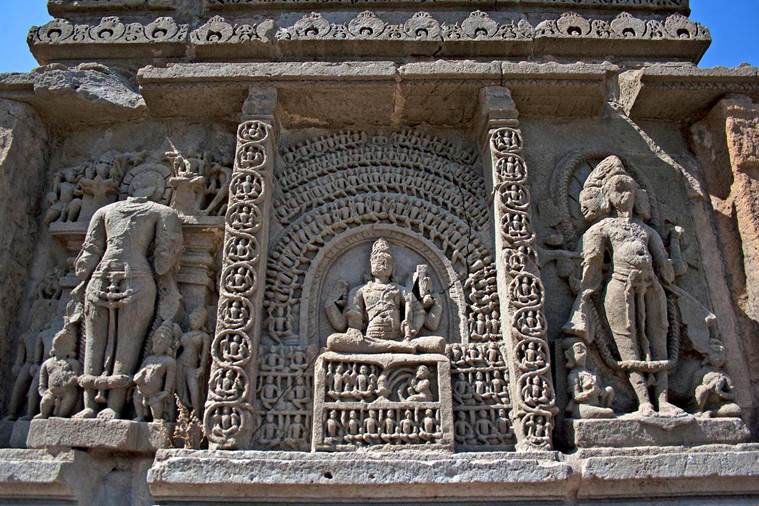 Sculpture of Dakshinamurti in Lakulisa Temple. (Source: Sahapedia.org)
Sculpture of Dakshinamurti in Lakulisa Temple. (Source: Sahapedia.org)
The city, however, has managed to catch the attention of archaeologists and architects alike. As of today, we have a total of 36 structures telling us stories that connect us to our past, help us understand a way of life that once was. As Prof VH Sonawane writes in his article ‘Excavations at Champaner’, the “excavation carried out in the area, where a full-fledged settlement developed over a period of half a century with strong defence management, magnificent monumental buildings, roads and bridges, gardens and pleasure resorts, excellent system of water management and provision of civic amenities, gives us a fair idea about the sophisticated urban ethos of the medieval period.” It is why we need to keep sites like Champaner alive, it is here that the roots of modern life lie. And what are we without our history? Without it, our existence would be amnesia riddled, and without any stories to tell.”
Lastly, if you don’t find these arguments in favour of Champaner-Pavagadh strong enough, here’s a bit of myth for you. It is said that Baiju Bawara – the man who rivalled the vocal talents of Tansen, the man who could light lamps through his singing – was born in Pavagadh, and he was born mute. It was through the blessings of goddess Kali, whose temple sits atop the Pavagadh hill, that he got his voice, and what a voice it was! So, if not for the history, then for seeking the blessings of the Goddess Kali, go explore the city. History awaits you, eagerly, at the eight gates of Champaner-Pavagadh.
More Lifestyle
Apr 19: Latest News
- 01
- 02
- 03
- 04
- 05


































